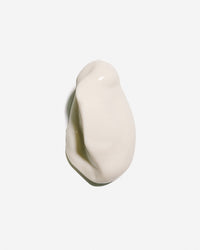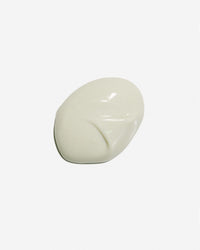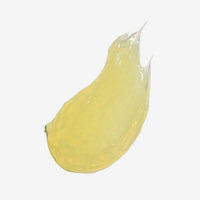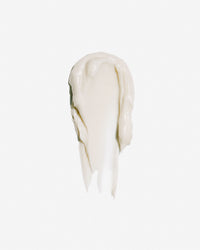Why does the face turn red?
In rosacea, if we look at the skin under a microscope, we see that it is very edematous, that the cells of the epidermis are disjointed and that the vessels of the dermis are irregular and dilated.
Is there a link between rosacea and the intestine ?
The red discoloration of the skin is associated with the dilation of very fine, very red and sometimes even purplish vessels defining rosacea. They are visible just under the surface of the skin and doctors refer to them as telangiectasias. This form is frequently accompanied by manifestations such as hot flashes.
The redness is accompanied by heightened sensitivity of the skin, which makes it difficult to apply cosmetics.
The main causes of redness
Eating hot or spicy foods, exertion, sun exposure, or alcohol consumption are known triggers for rosacea patients because they trigger flushes.
Temporary redness or rosacea: how to differentiate them?
Erythrosis: temporary redness of the cheeks which occur in very suggestive circumstances such as the ingestion of hot or spicy foods, exertion, the sun or the consumption of alcohol, over time the redness becomes permanent, without the blood vessels being visible, it is a precursor stage of rosacea
Rosacea can take three forms , which are not necessarily successive in time, nor the consequence of one another: the vascular form, the papulopustular form and the hypertrophic form with its ultimate stage: rhinophyma.
The vascular form or couperose
This is by far the most common form. This vascular anomaly is characterized by permanent redness that is more or less pronounced: this is the most characteristic element of rosacea, it is accompanied by a burning sensation in the face, the damage is mainly concentrated in the center of the face, sparing the area around the eyes and the mouth. A network of dilated vessels is observed (rosacea with telangiectasia).
The papulopustular form
In this case, the appearance of redness is in the form of papules and/or pustules which resemble acne lesions.
Papules are red, firm, and sometimes painful skin elevations that measure from one to four millimeters. They are surrounded by an inflammatory halo and may appear spontaneously against a background of redness in the center of the face.
Phymatous form
At an advanced stage, infiltrated red plaques may be seen. Rhinophyma, a rarer granulomatous hypertrophy of the nose, affects almost exclusively older men.
Rosacea: When redness becomes chronic

Aggravating factors to avoid
You need to know the triggers such as sun, alcohol or spices.
But also hormonal fluctuations: pregnancy, menopause. Taking medication, particularly corticosteroids, can also worsen symptoms.
It is important to take into account triggering factors such as heat or cold, exercise, UV rays, spicy foods, alcohol, etc. In the case of rosacea, these factors lead to the release of vasoactive neuropeptides relayed by the sensory nerves, which perpetuates the dysregulation at the origin of the symptoms.
How to reduce redness and soothe skin?
The tailored skincare routine recommended by our dermatologist
Cleansing should be gentle and non-irritating to regulate skin flora.
The Mango & Avocado Soap, rich in donkey milk, will be suitable. I recommend rinsing with thermal spring water afterwards, which will remove chlorine and limescale from tap water.
Moisturizer adapted to the skin type, often dry and sensitive skin, or combination skin cream if hyper seborrhea is associated. Sensitive skin and redness: Which cream should I choose for my sensitive skin ? ?
Common Mistakes That Make Redness Worse
Facial redness , whether temporary or long-lasting, can be accentuated by inappropriate actions in your skincare routine . Overly aggressive cleansing, harsh skincare products or poorly rinsed makeup removal can weaken the skin barrier and cause increased skin reactivity , particularly in sensitive or reactive skin .
Exposure to the sun without adequate sun protection , especially during peak radiation or after sunburn , causes blood vessels to dilate and increases blood flow to the skin, promoting the appearance of skin redness or even permanent redness .
Emotional reactions ( stress, heat, embarrassment) or certain foods (alcohol, spicy foods) can trigger sudden facial erythema . Finally, allergic reactions to certain cosmetic treatments , perfumes or essential oils (such as lavender oil ) are common in hypersensitive skin and can cause inflammatory flare-ups .
Active ingredients effective against redness and rosacea
To take care of skin prone to redness , it is essential to adopt a gentle, protective and suitable beauty routine , combining natural and dermatologically recognized active ingredients to soothe skin reactivity and strengthen the skin barrier .
Soothing active ingredients: niacinamide, centella asiatica, calendula
Niacinamide ( vitamin B3) calms inflammatory flare-ups , improves skin microcirculation and strengthens the tolerance of sensitive skin . It acts gently on facial redness linked to rosacea or imbalances in the venous system .
Centella asiatica , a restorative plant par excellence, helps soothe rosacea and irritations . Calendula , rich in natural anti-inflammatory active ingredients, calms skin redness and is particularly suitable for hypersensitive skin .
Finally, aloe vera , known for its moisturizing and anti-redness properties, provides immediate and lasting comfort, while rebalancing skin heated by UV rays or the sun's rays .
Vasoconstrictor and anti-inflammatory active ingredients
To reduce permanent redness and improve skin microcirculation , certain plant extracts such as ruscus , ginkgo biloba or licorice help to constrict dilated blood vessels . These active ingredients help to reduce the intensity of facial redness , particularly in cases of rosacea or atopic dermatitis .
Ingredients rich in polyphenols , such as green tea or red vine, act on inflammatory flare-ups and protect the skin from environmental aggressions, such as UV rays .
Azelaic acid , well known in dermatology, is an active ingredient that is both antibacterial, anti-inflammatory and depigmenting, recommended for skin care in cases of persistent redness or acne breakouts associated with sensitive skin .
Ingredients to avoid to avoid aggravating redness
Skin prone to redness requires special attention. Certain ingredients found in conventional cosmetic products can aggravate symptoms:
- Synthetic fragrances and strong essential oils ( like lavender oil )
- Drying alcohols and aggressive surfactants
- High concentration mechanical or acid exfoliants
- Chemical UV filters poorly tolerated
It is essential to opt for a personalized routine , gentle and formulated without irritants, with a moisturizer suitable for sensitive skin and effective sun protection .
What treatments are there for persistent redness?
When facial redness becomes chronic or rosacea sets in, specific treatments can complement your skincare routine . Dermatological monitoring is recommended to adapt treatment.
Specific dermatological care and creams
Some treatments are formulated specifically for reactive skin : they include anti-redness active ingredients such as niacinamide , azelaic acid , or soothing plant extracts. These dermatological products help control inflammatory flare-ups , reduce the signs of rosacea and calm feelings of heat.
Topical treatments, under prescription, are also used to relieve symptoms related to atopic dermatitis , contact eczema or permanent redness .
Discover the best sensitive skin cream formulated by our dermatologist and made with ultra-powerful active ingredients derived from biotechnology.
Medical treatments: laser, IPL and dermatological prescriptions
Medical treatments can target the blood vessels responsible for persistent redness . Vascular laser or pulsed light (IPL) are used to reduce telangiectasias (small visible vessels) and improve skin tone.
The LED lamp , for its part, can soothe inflammatory flare-ups by acting on the deep layers of the skin, while promoting cell regeneration.
Finally, depending on the type of skin redness (such as facial erythema or papulopustular rosacea ), personalized medical treatment may be offered, including prescription creams or oral antibiotics.




